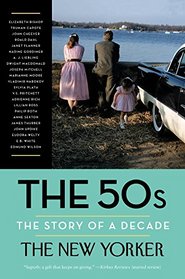Search -
The 50s: The Story of a Decade (Modern Library Paperbacks)
The 50s The Story of a Decade - Modern Library Paperbacks
Author:
Including contributions by Elizabeth Bishop ? Truman Capote ? John Cheever ? Roald Dahl ? Janet Flanner ? Nadine Gordimer ? A. J. Liebling ? Dwight Macdonald ? Joseph Mitchell ? Marianne Moore ? Vladimir Nabokov ? Sylvia Plath ? V. S. Pritchett ? Adrienne Rich ? Lillian Ross ? Philip Roth ? Anne Sexton ? James Thurber ? John Updike ? Eudora Welt... more »
Author:
Including contributions by Elizabeth Bishop ? Truman Capote ? John Cheever ? Roald Dahl ? Janet Flanner ? Nadine Gordimer ? A. J. Liebling ? Dwight Macdonald ? Joseph Mitchell ? Marianne Moore ? Vladimir Nabokov ? Sylvia Plath ? V. S. Pritchett ? Adrienne Rich ? Lillian Ross ? Philip Roth ? Anne Sexton ? James Thurber ? John Updike ? Eudora Welt... more »
ISBN-13: 9780812983302
ISBN-10: 0812983300
Publication Date: 7/5/2016
Pages: 784
Rating: ?
ISBN-10: 0812983300
Publication Date: 7/5/2016
Pages: 784
Rating: ?
0 stars, based on 0 rating
Genres:




